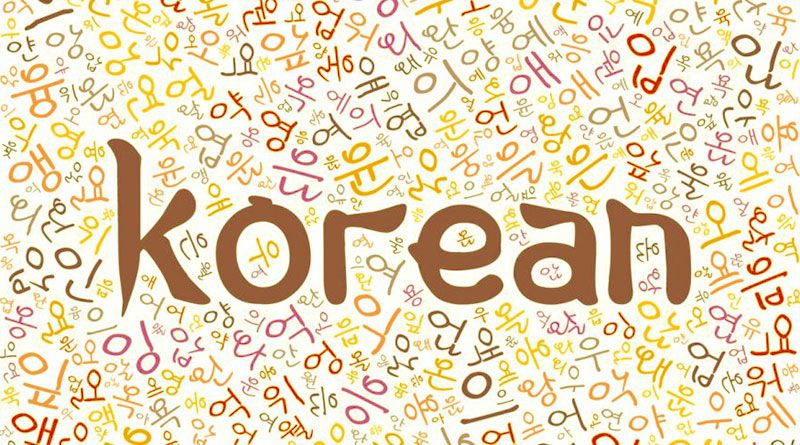If you want to learn Korean, you need to study Korean verb usage. As there are many types, it would help to explore the different Korean verbs classification.
Korean Language Verbs
Korean verbs are generally classified into four groups:
- Active or processive that denotes action or movement
- Descriptive or stative, also known as adjectives in English
- Existential, referring to the existence or presence of something
- Copulative, non-verb words that use verb endings
- Affirmative copula or 이다, meaning ida or “to be”
- Negative copula or 아니다, meaning anida or “not to be.”
Forms of Korean Verbs
Every Korean verb has two parts. First is the verb stem, which can either be simple or expanded. The second is the inflectional suffix.
It is important to note that no verb is complete without any of the usual suffixes. This makes Korean verbs longer than their English counterparts. That’s because they use suffixes for the grammatical difference.
Regular Korean Verb
Known as 규칙동사 in the local language, it is something you can conjugate quickly. It’s all about removing the 다 and adding the correct verb conjugation.
For example, instead of 먹다 or to eat, you can write it as 먹어요 instead.
Irregular Korean Verbs
These 불규칙 동사 change form or spelling after verb conjugation.
The 받침 or batchim is used to indicate such verbs. However, not all phrases with a batchim are categorized as such. Despite this, batchims are often used to classify an irregular verb.
Here are examples of words that use different batchims:
- ㄷ – 듣다 – deutda or to listen
- ㄹ – 알다 – alda or to learn
- ㅂ – 밉다 – mipda or to help
Here’s another example of a word with 르 as the verb stem ending:
- 나르다 – nareuda or to carry.
The word 짓다 – jitda or to build, has the character ㅅas its batchim.
There’s also the 으 batchim, as in 애쓰다 or aesseuda (to try).
Another one is 하얗다 or hayata, meaning to be white, uses ㅎ as a batchim.
하다 Korean verb
하다, which means ‘to do’ in a Korean sentence, is considered a regular verb. However, you can add it to nouns to create verbs.
Basic examples include:
- 노래하다 or noraehada, which means to sing
- 사랑하다 or saranghada, which means to love
- 말하다 or malhada, which means to speak
Passive Korean Verbs
In Korean grammar, a passive verb is called 피동사. It uses suffixes like 되/돼, 이, 히, 리, or 기.
Verbs with 하다 endings, on the other hand, use 되 or 돼 to make them passive.
For example, 사용하다 is the usual way to write “to use.” To make it passive (“to be used”), it is written as 사용되다.
As for non-verb words, the characters 이, 히, 리, and 기 are used in sentences.
Take 잊다 or “to forget.” When converted to passive form, it is written as 잊다 – 잊히다 (“to be forgotten”).
Korean Sentence Adjectives
A Korean adjective or 형용사 is included in this list because it is classified as descriptive verbs. It’s named as such because it’s used to describe a person, thing, or experience.
Additionally, most adjectives come from verbs.
Here are some structures that most Korean sentences use.
- 기쁘다 or gippeuda – to be glad
- 슬프다 or seulpeuda – to be sad
- 놀라다 or nollada – to be surprised
- 시끄럽다 or sikkeureopda – to be noisy
Korean Verb Tenses
Similar to the English language, the Korean vocabulary uses verb tenses. They are conjugated to create the past tense, present tense, and future tense.
Also known as 시제 or sije in Korean, 과거 시제 or gwageo sije refers to the past.
현재 시제 or hyeonjae sije alludes to the present, while 미래 시제 or mirae sije corresponds to the future tense.
In addition, verbal tenses can also be written as progressive (진행 시제 or jinhaeng sije) or perfect(완료 시제 or wallyo sije).
Verb Formality
The suffix ᄇis used in words that end in a vowel.
The symbol 습, on the other hand, is used after a consonant.
Both are used to convey politeness in formal conversations, like when speaking to elders or superiors. But when it comes to talking to and about elders, formal and honorific suffixes are both used.
Structure in Sentences
A Korean sentence is typically right-headed in the order subject-object-verb. That said, a verb is the last word in the sentence structure.
On the other hand, you may use a verb conjugation on its own. You can remove the subject and object, especially if the intention is obvious.
Instead of saying “I found it,” a speaker may opt to say 찾았다 or chajatda instead.
In Conclusion
Korean verbs are categorized into four: active, descriptive, existential, and copulative.
It also has different forms, namely regular and irregular. There are passive verbs and adjectives as well.
Likewise, Korean verbs have three tenses: past, present, and future.

Namaste UI collaborates closely with clients to develop tailored guest posting strategies that align with their unique goals and target audiences. Their commitment to delivering high-quality, niche-specific content ensures that each guest post not only meets but exceeds the expectations of both clients and the hosting platforms. Connect with us on social media for the latest updates on guest posting trends, outreach strategies, and digital marketing tips. For any types of guest posting services, contact us on info[at]namasteui.com.

